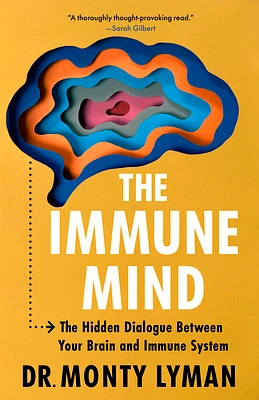Home
Environmental Influences on the Immune System
Loading Inventory...
Barnes and Noble
Environmental Influences on the Immune System
Current price: $169.99


Barnes and Noble
Environmental Influences on the Immune System
Current price: $169.99
Loading Inventory...
Size: OS
*Product Information may vary - to confirm product availability, pricing, and additional information please contact Barnes and Noble
This book brings together articles on the overarching theme of how the environment shapes the immune system.
The immune system is commonly assumed to respond to harmful pathogens such as bacteria and viruses. However, harmless bacteria, chemicals, stress, normal food and other factors can also trigger, shape or interfere with the immune system, often producing adverse effects. Yet, it is also becoming increasingly accepted that some of these interactions are physiological and necessary for a healthy immune system.
Examples of negative effects include the immunosuppressive effects of UV irradiation, or the immunotoxic effects of man-made chemicals such as polycyclic aromatic hydrocarbons. Autoimmunity or allergies can be the adverse consequences of interaction between the immune system and chemical compounds such as drugs. Positive effects can come from natural exposure levels to bacteria, healthy life-style or the diet.
There is a great need to understand how communication between the environment and the immune system works. This book addresses this need. It covers environmental factors (such as bacteria, sun exposure), human factors (such as age, exercise or stress), and important man-made factors (such as air pollution). A chapter on human rights complements the scientific chapters. The book is intended for immunologists, toxicologists and researchers who want to know how the immune system works and is triggered, as well as for medical doctors in environmental medicine and the general public interested in immunology.
The immune system is commonly assumed to respond to harmful pathogens such as bacteria and viruses. However, harmless bacteria, chemicals, stress, normal food and other factors can also trigger, shape or interfere with the immune system, often producing adverse effects. Yet, it is also becoming increasingly accepted that some of these interactions are physiological and necessary for a healthy immune system.
Examples of negative effects include the immunosuppressive effects of UV irradiation, or the immunotoxic effects of man-made chemicals such as polycyclic aromatic hydrocarbons. Autoimmunity or allergies can be the adverse consequences of interaction between the immune system and chemical compounds such as drugs. Positive effects can come from natural exposure levels to bacteria, healthy life-style or the diet.
There is a great need to understand how communication between the environment and the immune system works. This book addresses this need. It covers environmental factors (such as bacteria, sun exposure), human factors (such as age, exercise or stress), and important man-made factors (such as air pollution). A chapter on human rights complements the scientific chapters. The book is intended for immunologists, toxicologists and researchers who want to know how the immune system works and is triggered, as well as for medical doctors in environmental medicine and the general public interested in immunology.


















